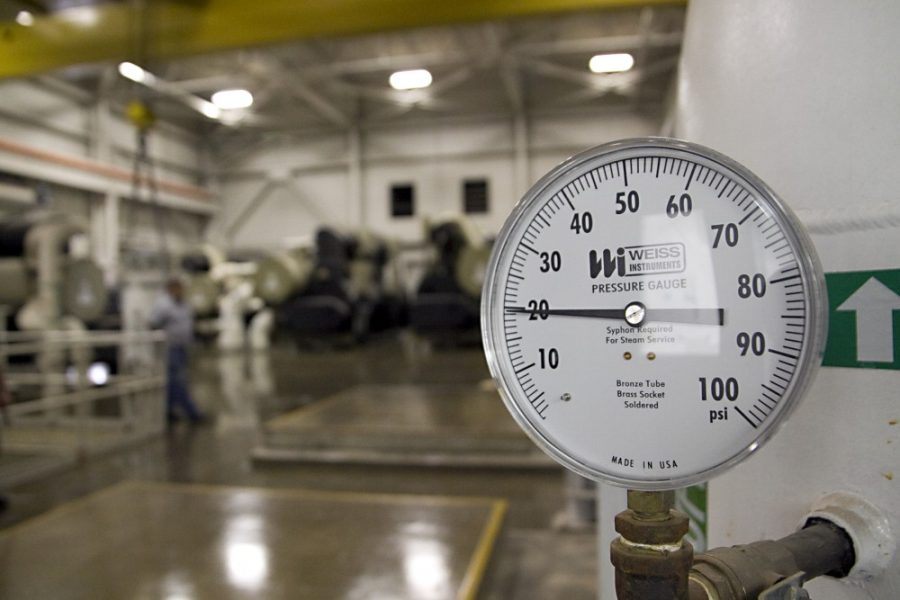The UA racks up about $1 million in electric charges every month. To combat this, the UA is implementing ways to reduce its energy use, and its bottom line in the process.
The UA is able to produce one-third of its own electricity every year. Mark St. Onge, the superintendent at the central plant of Facilities Management, said the campus has two turbines powered by natural gas that can produce 12 megawatts of electricity per hour.
Joe Thomas, the energy manager of Facilities Management, said that one megawatt per hour is able to produce enough electricity to power a neighborhood of 1,000 homes. Thomas said the school uses about 33 megawatts per hour and that the turbines were put in to help cope with the massive amount of energy consumed on campus each day.
“It’s essentially a jet engine that burns natural gas at a high pressure,” St. Onge said. “The gas being burnt turns the turbine which turns a generator and produces the power.”
St. Onge said another way the campus is able to be more sustainable and use less energy is due to the Central Heating and Refrigeration Plant. Thomas explained that there are 156 tanks that contain water that are frozen every night. After they are frozen they melt throughout the next day. The water melted from these tanks is then pumped into pipes and sent to campus buildings.
“The plant is used to heat and cool most of the buildings on campus to reduce the cost of energy,” St. Onge said. He added that this central heating and cooling system is much more effective and cost-friendly than placing individual units in each building and each room.
“They’re improving,” said Alissa Ufnal, a senior studying Spanish linguistics. “With the new use of the solar powered trash cans and how they turned the fountains off last year you can see a lot of energy saving.”
In addition, the UA Green Fund has bankrolled projects to help make the campus more sustainable. According to its website, it has funded a project to put reflective coatings on all the windows on the buildings on campus, a project to replace all the lights in the Second Street Parking Garage with more sustainable LED lighting and even an advertisement project that places an ad on condom packages that reads, “Turn off the lights.”
Two years ago the UA was recognized by the National Wildlife Federation’s campus ecology program for its long-term sustainability efforts. The UA is one of only six universities in the U.S. that has exemplary sustainability.









